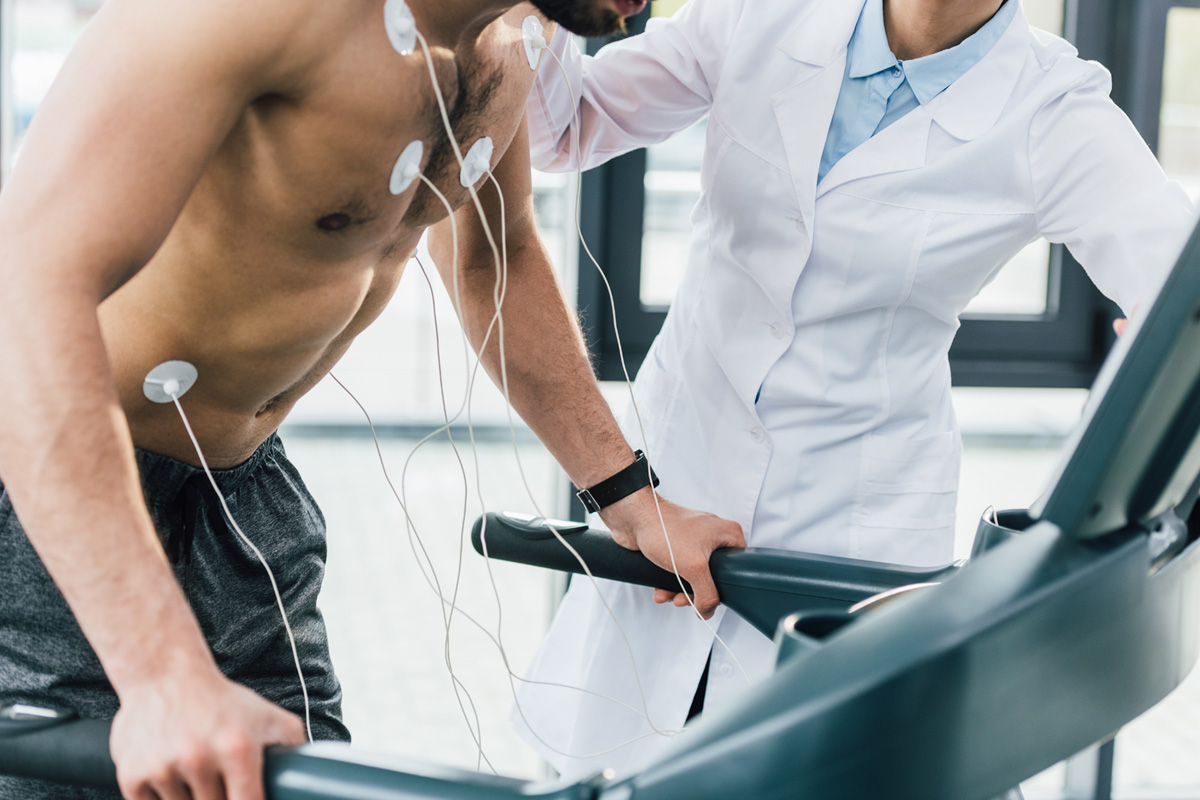What is The Test?
A nuclear stress test, also called a myocardial perfusion scan, is an imaging exam of your heart. A tiny amount of a radioactive substance, called a radioactive tracer, is administered through an IV placed in your arm. This tracer will travel through your heart muscle and show how well your heart muscle is pumping. This imaging exam is performed with an exercise treadmill exam.
Patient Preparation
There is nothing to eat 4 hours before the test and no caffeine for 12 hours prior to the test. Medications may be taken unless told not to by your physician. Wear comfortable clothing.

What to Expect
Once in the testing room, we will ask you to sign a consent form to give us permission to perform the nuclear treadmill stress test. An IV will be placed in your arm to administer the radioactive tracer used for your stress test. A nuclear medicine technologist will administer the first dose of the radioactive tracer. This tracer will circulate through your blood stream for 30-60 minutes. Once the circulation time is complete, the pre stress images will be obtained of your heart. This is done by a special camera that can follow the radioactive tracer through your heart muscle. The first set of images will take 20-30 minutes. After the images are complete, the stress test will begin. We will ask you to raise your shirt or take your shirt off and prepare the skin on your chest for the EKG electrodes to be placed. Once the electrodes are in place you will be connected to the EKG monitor on the treadmill. A target heart rate will be calculated for you based on your age. This target heart rate will need to be met for exam accuracy. You will begin walking on the treadmill. The treadmill speed will start at a slow pace and increase in speed and incline every three minutes until your target heart rate is met. While walking on the treadmill, your heart rate, heart rhythm and blood pressures are monitored and recorded. Once you have reached your target heart rate by walking or running on the treadmill, the second dose of radioactive tracer is injected through the IV access and the treadmill portion of the stress test is complete. A second set of images, or post exercise images, are obtained for comparison. This test can take 4-6 hours.
Nuclear Stress Test FAQs
A stress test is run by doctors to study how well your heart handles workloads. The test makes your heart work harder to pump more blood. It specifically shows blood supply in the arteries that lead to the heart and tests how well your blood flow to your heart is.
Prior to your stress test, your doctor will ask you some questions about your overall health and cardiovascular activity. This will give them an idea of the amount of exercise they will have you complete for the test. Your doctor will also do an overall assessment of your heart and lungs to make sure they are aware of any abnormalities that may change the outcome of your stress test.
After your stress test you will likely feel tired and out of breath. You will be asked to stand still for a few seconds and then told you can lie down. During this period your doctor will observe and check for any abnormalities as your heart rate slows back to normal, and your breathing slows down.

